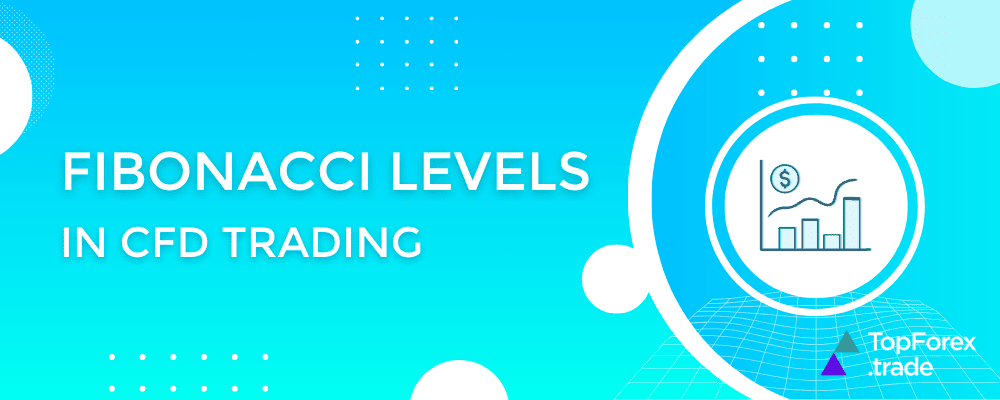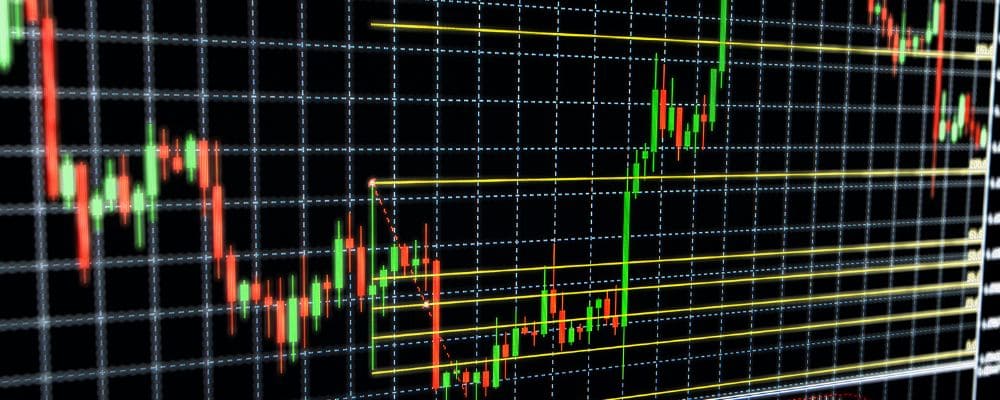How to use Fibonacci levels for successful CFD trading strategies

Fibonacci levels, derived from the famous Fibonacci sequence, are a cornerstone of Technical analysis. These levels help traders identify potential support and resistance zones in the market, making them invaluable in CFD trading. The simplicity and effectiveness of Fibonacci tools have made them a favorite among traders who aim to navigate the volatility of CFDs with precision.
Fibonacci levels are based on key ratios derived from the Fibonacci sequence, such as 23.6%, 38.2%, 50%, 61.8%, and 100%. These percentages correspond to areas where prices often retrace or extend after a significant move.
- Retracement levels: Used to predict potential reversal zones during pullbacks.
- Extension levels: Help traders set targets in the direction of the trend.
These levels act as psychological benchmarks for traders, helping to spot where momentum might shift.
How to use Fibonacci levels in CFD trading

— Identifying entry points
When a market trends upward or downward, traders draw Fibonacci retracement lines between a swing high and swing low. For example, in a downtrend, price pulling back to 61.8% might signal a selling opportunity.
— Setting stop losses
Placing stop losses slightly beyond Fibonacci levels can protect trades from sudden reversals. For instance, in an uptrend, setting a stop below the 50% retracement provides a buffer against price fluctuations.
— Planning Take-Profit levels
Fibonacci extension levels (e.g., 161.8% or 261.8%) guide traders in setting realistic profit targets beyond the initial price move.
Practical example of Fibonacci in CFD trading
Imagine you’re trading a CFD on gold:
1. Gold experiences a strong upward move, forming a swing low at $1,800 and a swing high at $1,850.
2. You draw Fibonacci retracement levels from $1,800 to $1,850.
3. Price pulls back to the 38.2% level ($1,831), providing a potential entry point for a long trade.
4. You set your stop-loss just below the 50% retracement level ($1,825).
5. Your profit target is at the 161.8% extension level ($1,880).
This approach gives structure to your trading strategy and improves risk management.
Advantages of Fibonacci in CFD trading

Fibonacci levels provide a structured approach to understanding market movements, especially in the often volatile world of CFD trading. Below are some key advantages:
- Pinpoints key levels for decision-making
Fibonacci retracement and extension levels offer traders a clear view of potential support and resistance zones, which are critical for planning trades. Instead of relying on intuition, traders use these levels to anticipate where the market might reverse or continue its trend. - Enhances risk management
By identifying probable reversal zones, Fibonacci levels help traders place stop-loss orders strategically. For instance, a trader entering a long position at the 61.8% retracement level can place a stop just below the 50% level, minimizing risk while allowing room for normal market fluctuations. - Applicable across different timeframes and assets
Whether you trade on a five-minute chart or a daily chart, Fibonacci levels adapt seamlessly. They are also effective across various CFD markets, including forex, indices, and commodities, making them a versatile tool in a trader’s arsenal. - Complements other indicators
Fibonacci levels work well when combined with trend lines, moving averages, or oscillators like the RSI or MACD. For instance, if the RSI confirms an overbought condition at a Fibonacci extension level, the trader can have more confidence in their decision to take profits
Limitations of Fibonacci Levels in CFD trading

While Fibonacci levels are a powerful tool, they have their limitations, which traders must consider to use them effectively:
- Subjectivity in application
The effectiveness of Fibonacci levels depends on accurately identifying swing highs and lows. Traders often disagree on where these points lie, leading to variations in the drawn levels. This subjectivity can result in conflicting signals, especially in choppy markets. - Not a standalone indicator
Relying solely on Fibonacci levels is risky. They do not account for market sentiment, fundamental factors, or other technical elements like trend strength. To improve reliability, Fibonacci should always be used in conjunction with other indicators or methods, such as candlestick patterns, volume analysis, or moving averages. - False signals in volatile markets
In highly volatile markets, prices can pierce through Fibonacci levels before reversing, leading to potential losses. For example, price might momentarily break below the 61.8% retracement before resuming its upward trend. This “false breakout” can trigger stop-loss orders prematurely. - Requires practice and experience
For new traders, mastering Fibonacci levels can be challenging. They require significant practice to understand how to draw and interpret them effectively, as well as the patience to analyze how these levels interact with market trends.
How to overcome Fibonacci limitations
To mitigate these limitations:
- Combine Fibonacci levels with trend analysis, support and resistance zones, and oscillators like RSI to confirm signals.
- Use them in markets with clear trends rather than erratic, sideways movement.
- Practice on demo accounts to refine your ability to identify swing highs and lows and to interpret Fibonacci levels in real market conditions.
By acknowledging and addressing these limitations, traders can use Fibonacci levels more effectively and reduce the risks associated with their use.
Choosing the right CFD broker for Fibonacci-based trading

Fibonacci levels are a powerful tool, but they require the right platform and resources to be effective. When selecting a CFD broker to incorporate Fibonacci-based strategies into your trading, it’s essential to consider factors such as charting tools, educational resources, execution speed, and overall platform usability. Below are several brokers that provide excellent support for traders using Fibonacci levels, each with their unique advantages:
Plus500: Intuitive platform with Fibonacci drawing tools
Plus500 offers a user-friendly interface that allows experience traders to draw and analyze Fibonacci retracement and extension levels on various asset charts. Its intuitive platform is particularly beneficial for traders who are just starting to use Fibonacci tools, as it simplifies the process of identifying key price levels.
Charting tools: Plus500 provides a wide range of technical analysis tools, including a variety of drawing options for Fibonacci retracement and extension levels. These tools are accessible directly within the trading platform, allowing for quick and efficient analysis.
Easy access to key data: With live market data and advanced charting options, Plus500 makes it easy for traders to spot the key Fibonacci levels in real-time, facilitating better decision-making.
Mobile trading: Plus500’s mobile platform ensures that traders can apply Fibonacci analysis on the go, making it easy to identify key retracement and extension levels wherever they are.
HF Markets: Comprehensive resources for Technical analysis
HF Markets (HotForex) is known for its extensive educational resources and advanced charting tools, which make it an excellent choice for traders looking to integrate Fibonacci analysis into their strategies. The broker’s focus on providing thorough market research and expert insights complements Fibonacci analysis, allowing traders to make more informed decisions.
Education and training: HF Markets offers a variety of webinars, courses, and one-on-one training sessions that teach how to apply Fibonacci retracement and extension levels in real market scenarios. These resources are invaluable for traders who want to deepen their understanding of Fibonacci analysis.
Advanced trading tools: The broker provides multiple platforms, including MetaTrader 4 and 5, both of which feature robust charting tools with the ability to apply Fibonacci levels easily. These platforms also offer multiple timeframes, allowing traders to analyze Fibonacci levels from short-term to long-term perspectives.
Market research and insights: With daily market analysis and in-depth reports, HF Markets helps traders understand the broader market context, which is essential when using Fibonacci levels to predict price action.
XTB: Cutting-edge trading platforms with Fibonacci tools
XTB is renowned for its advanced trading platform, xStation, which offers one of the most comprehensive charting tools available. This platform is particularly effective for Fibonacci traders due to its intuitive layout and advanced features designed for technical analysis.
xStation platform: xStation features powerful charting tools, including the ability to draw and modify Fibonacci retracement and extension levels easily. The platform also supports real-time data and a variety of chart types, allowing traders to visualize Fibonacci levels across multiple timeframes.
Fibonacci analysis training: XTB provides a wealth of educational materials, including videos, webinars, and articles, that guide traders on how to effectively use Fibonacci levels in their trading strategies.
Real-time market analysis: The broker offers detailed market analysis, helping traders identify key price levels and trends, which is particularly useful when analyzing Fibonacci retracements or extensions.
Exness: Low-cost trading and fast execution for Fibonacci strategies
Exness is known for its low-cost structure and fast order execution, which are essential for traders using Fibonacci-based strategies. Tight spreads and quick execution help ensure that trades are placed at the optimal price levels, which is critical when working with precise Fibonacci retracement or extension levels.
Low spreads and fast execution: Exness offers tight spreads and quick order execution, meaning Fibonacci-based trades are less likely to be affected by slippage, helping to execute trades more efficiently at key Fibonacci levels.
MetaTrader platforms: Exness provides access to both MetaTrader 4 and 5, platforms known for their comprehensive charting tools, including Fibonacci retracement and extension. These platforms allow for precision when applying Fibonacci tools.
Wide range of CFDs: Exness offers a wide range of CFDs across forex, commodities, and indices, making it easy to apply Fibonacci analysis to different markets.
Fibonacci levels are a powerful tool for CFD traders, helping to anticipate market behavior and plan trades with confidence. However, mastering this technique requires practice and a solid understanding of its limitations. Start by experimenting with Fibonacci tools on a demo account provided by trusted brokers, and build a strategy that integrates these levels into your broader trading approach.
How to use Fibonacci levels for successful CFD trading strategies - FAQ